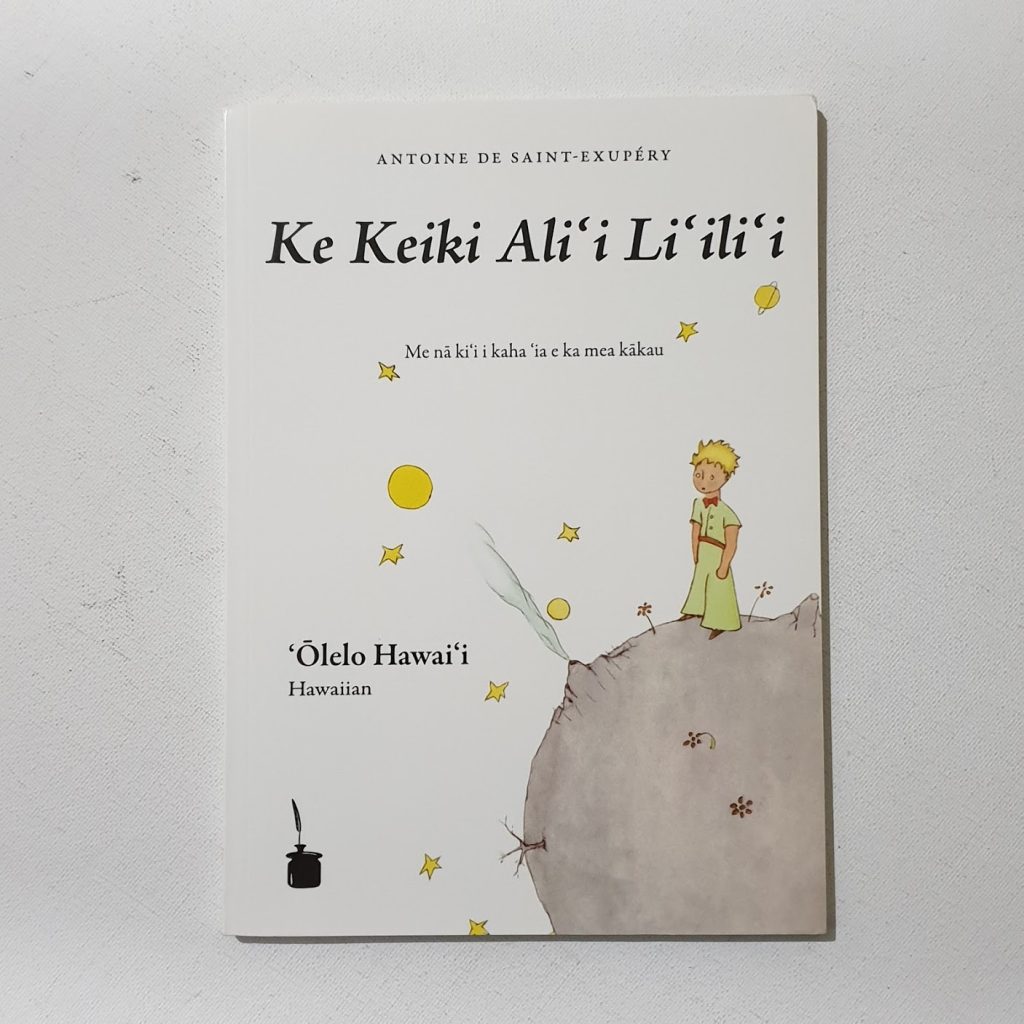
Ke Keiki Ali’i Li’ili’i – in Hawaiian.
The Hawaiian language, or ʻŌlelo Hawaiʻi, is a deeply expressive and spiritually resonant member of the Eastern Polynesian branch of the Austronesian language family, closely related to Tahitian, Māori, Rapa Nui, and Marquesan. Once the vibrant tongue of the sovereign Kingdom of Hawaiʻi, it embodies the ancestral voice of the Hawaiian people, whose culture was intricately woven with chant (oli), song (mele), oral genealogy (moʻokūʻauhau), and storytelling (moʻolelo). Hawaiian is known for its simple phonology—just eight consonants and five vowels—and its melodic, rhythmic cadence, reflecting the island environment from which it grew. Words like aloha (love, peace, greeting) and mahalo (thanks) are now known globally, but their full spiritual and cultural depth resonates far more profoundly in native speech.
Historically, Hawaiian flourished as the language of governance, diplomacy, and high culture. By the early 19th century, with the help of missionaries, it developed a robust written form using the Latin alphabet, producing a wealth of literature, including newspapers, law codes, and religious texts. For a brief period, Hawaiʻi boasted one of the highest literacy rates in the world. However, following the overthrow of the Hawaiian monarchy in 1893 and the subsequent annexation by the United States, English was aggressively imposed in schools, and the use of Hawaiian was discouraged—even punished—leading to a dramatic decline in speakers over the 20th century.
The story of Hawaiian in recent decades, however, is one of remarkable cultural revival. Beginning in the 1970s, grassroots efforts led to the establishment of immersion schools (Pūnana Leo), university programmes, and community-based initiatives that have reintroduced Hawaiian into homes, schools, and public life. Today, it is an official language of the state of Hawaiʻi, alongside English, and is increasingly visible in signage, ceremonies, and media. Fluent speakers still represent a minority, but a growing number of children are now being raised in Hawaiian-speaking households.
Culturally, Hawaiian is inseparable from the Native Hawaiian worldview, where words carry mana (spiritual power), and language is seen as alive, genealogical, and sacred. The language encodes a deep environmental knowledge, seen in its many terms for wind, rain, and sea states, as well as a social philosophy grounded in respect, balance, and kinship. Its close linguistic kinship with other Polynesian languages allows for mutual recognition among island peoples across the Pacific, and its revival is often celebrated as part of a broader Oceanic renaissance, in which languages once silenced are being restored as central pillars of identity and sovereignty.


